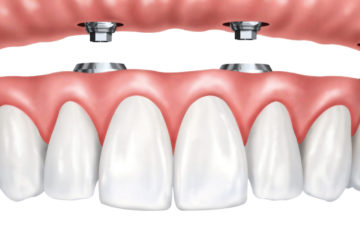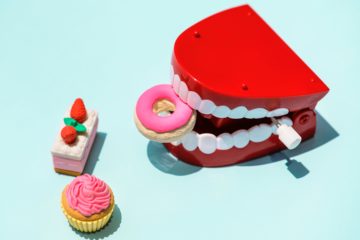Three Types of Implant-Supported Dental Prostheses

Dental implants are well known for their ability to replace teeth and provide excellent strength, stability, and aesthetics. But their application goes beyond merely replacing single teeth. One of the greatest advantages of dental implants is their versatility, as they can be used to restore the dentition in more ways than one. A dental prosthesis is merely a synthetic tooth or teeth that may be removable or cemented in place. Examples include complete and partial dentures, as well as crowns and bridges. In recent years, several types of implant-supported prostheses have become common dental treatments. Here are three types of implant-supported dental prostheses that can restore your smile.
Implant-Supported Dentures
As the name suggests, implant supported dentures rest on implants rather than on the bony ridge or roof of the mouth. Sometimes called “overdentures,” implant-supported dentures are removable, but while in place they are far more stable than traditional dentures. This treatment consists of having two to four implants placed in the mouth at strategic locations. The implants are submerged in bone but stick out beyond the gum line slightly. A denture is then fabricated with receptacles on the underside, which snap onto the implants. By adhering to the implants, the denture is extremely stable and rigid, making chewing and speaking much easier and more efficient.
Implant-Supported Bridges
If you are missing several teeth or have large gaps isolated to one area, an implant-supported bridge is a great option for patients who do not like the idea of a removable denture. Just like a bridge supported by natural teeth, implant bridges rely on two implants placed at either end of an edentulous (toothless) space. Several crowns that are bonded together are then cemented to the top of the implants, thereby restoring a continuous row of teeth. The benefit of implant bridges is that they are less prone to problems such as decay and periodontal disease since they are not reliant on natural teeth, although they must be dutifully cared for.
All-On-4
All-on-4 is a method of restoring teeth similar to an implant-supported denture, with some key differences. With this method, a dental prosthesis is placed on dental implants, but unlike an implant-supported denture, the prosthesis stays in place and is not removable. This is a significant advantage over an implant-supported denture since the prosthesis essentially functions just like natural teeth. In addition, this type of prosthesis does not usually require palatal coverage like a traditional or implant-supported denture, making it more comfortable and less likely to trap food debris.
No matter what your situation may be, odds are that dental implants can play a major role in helping you regain the form and function of your smile.




No Comment